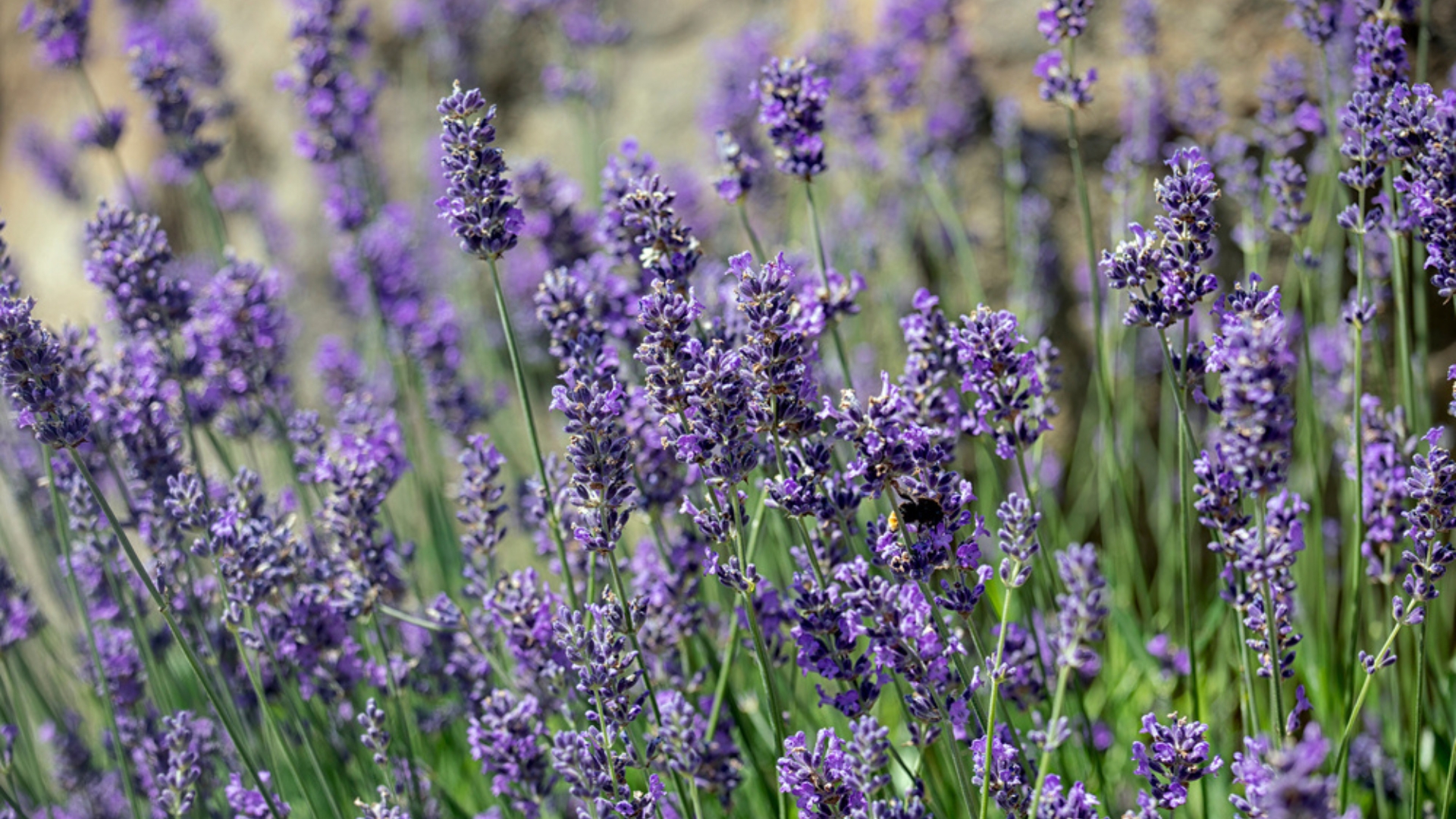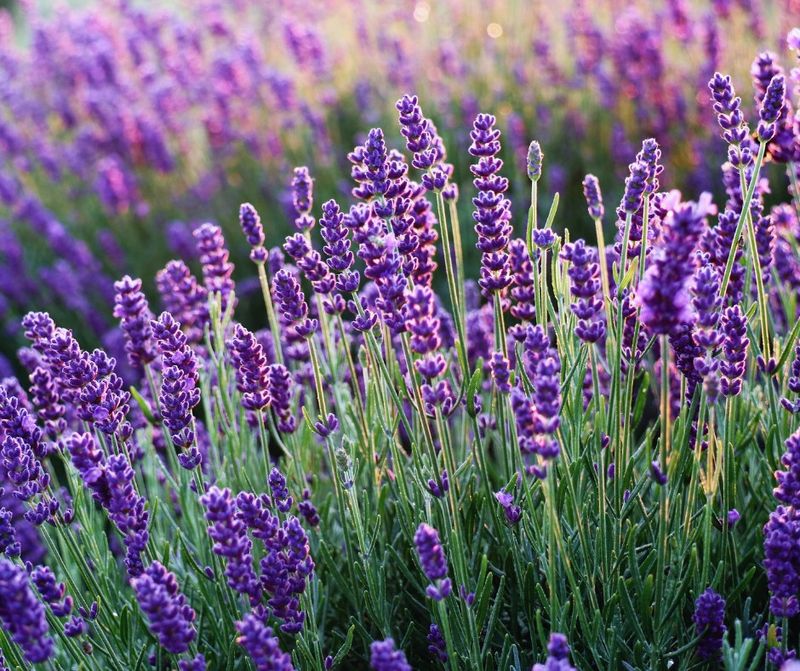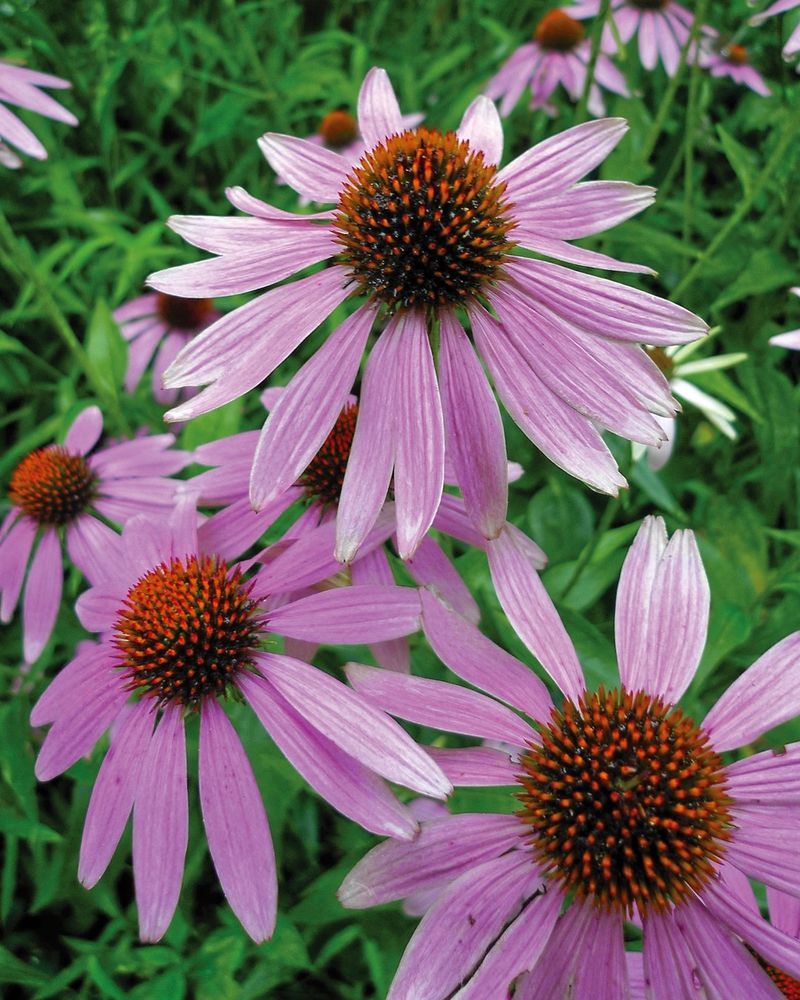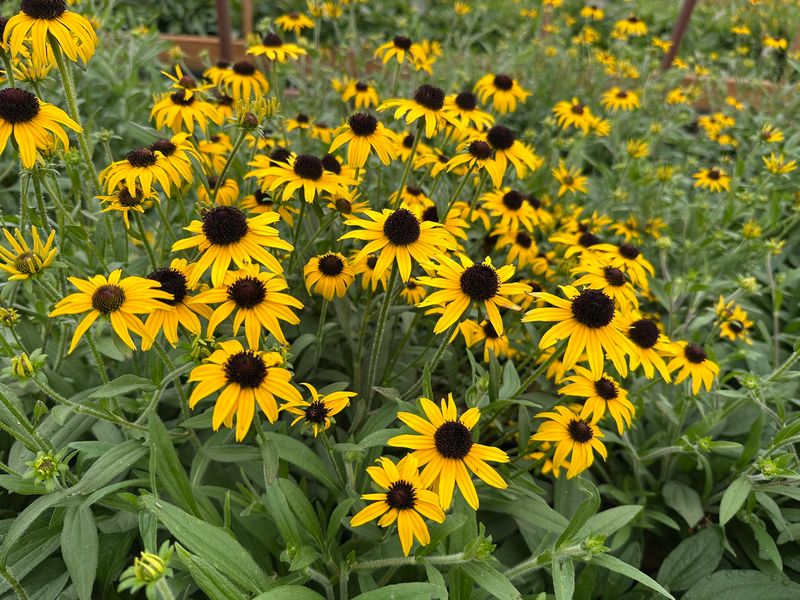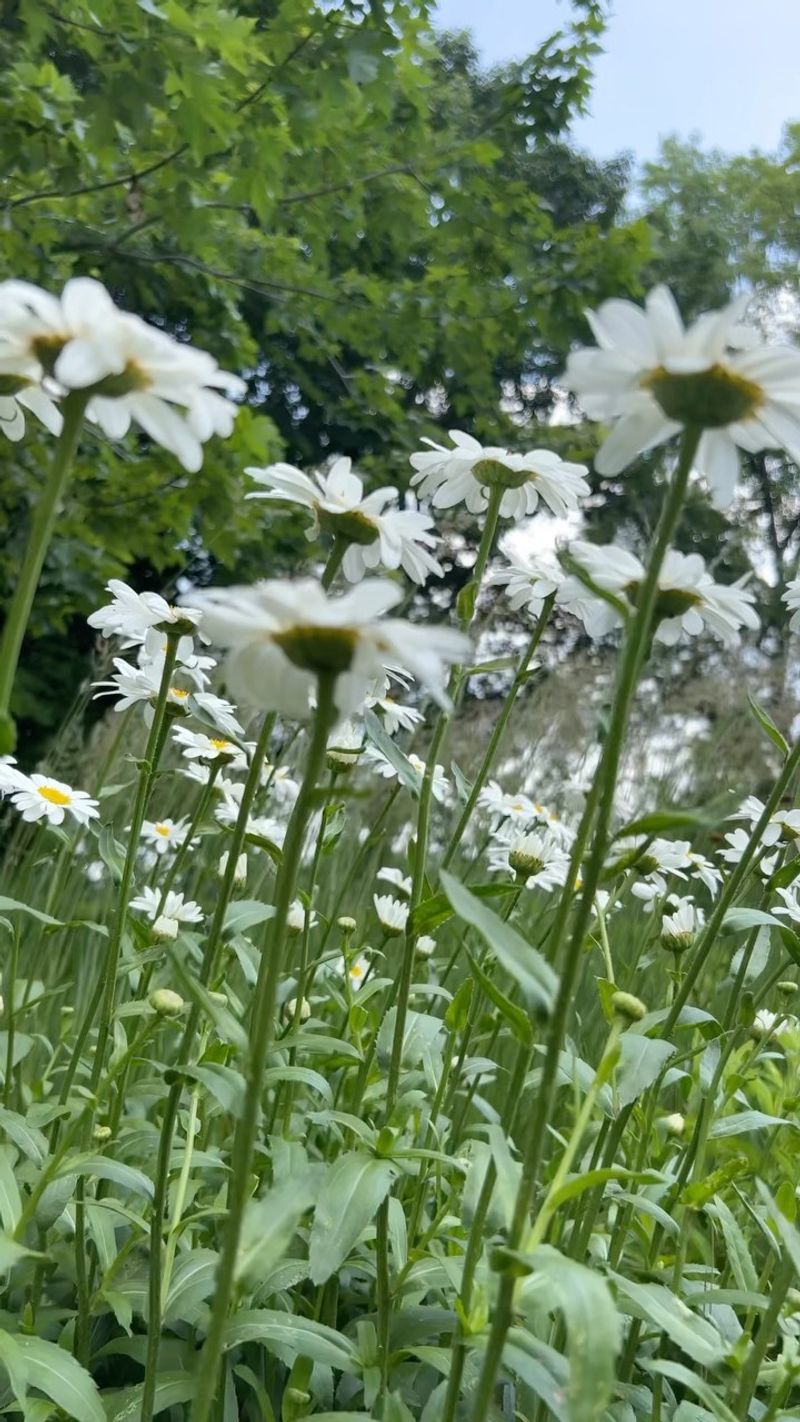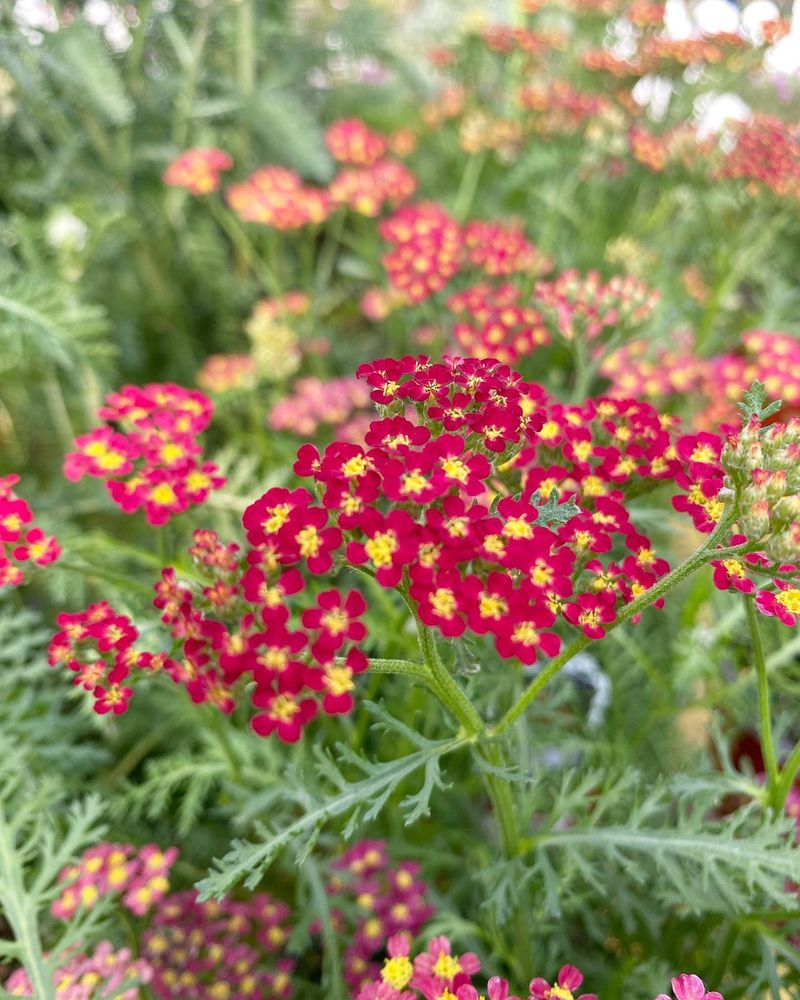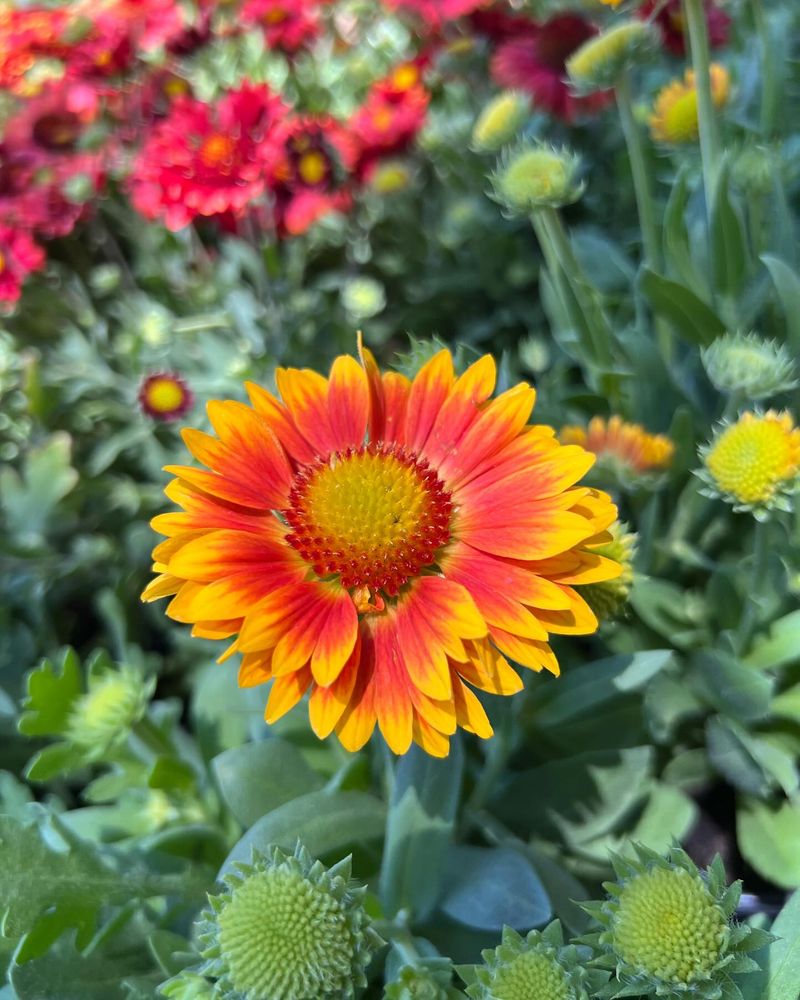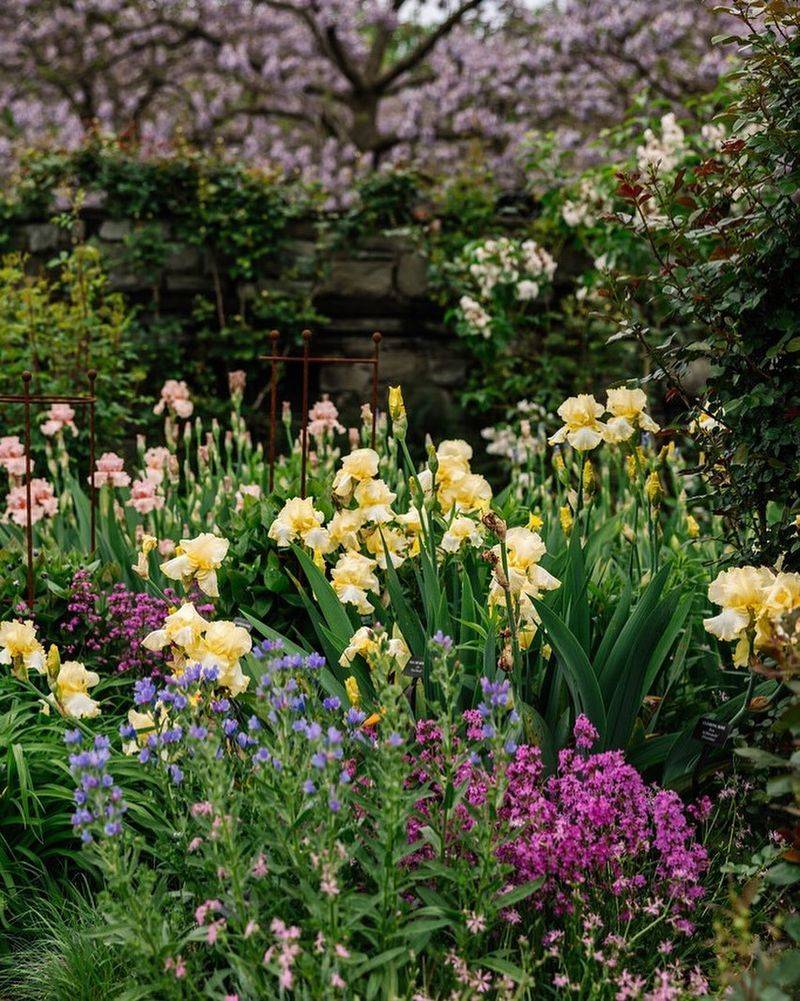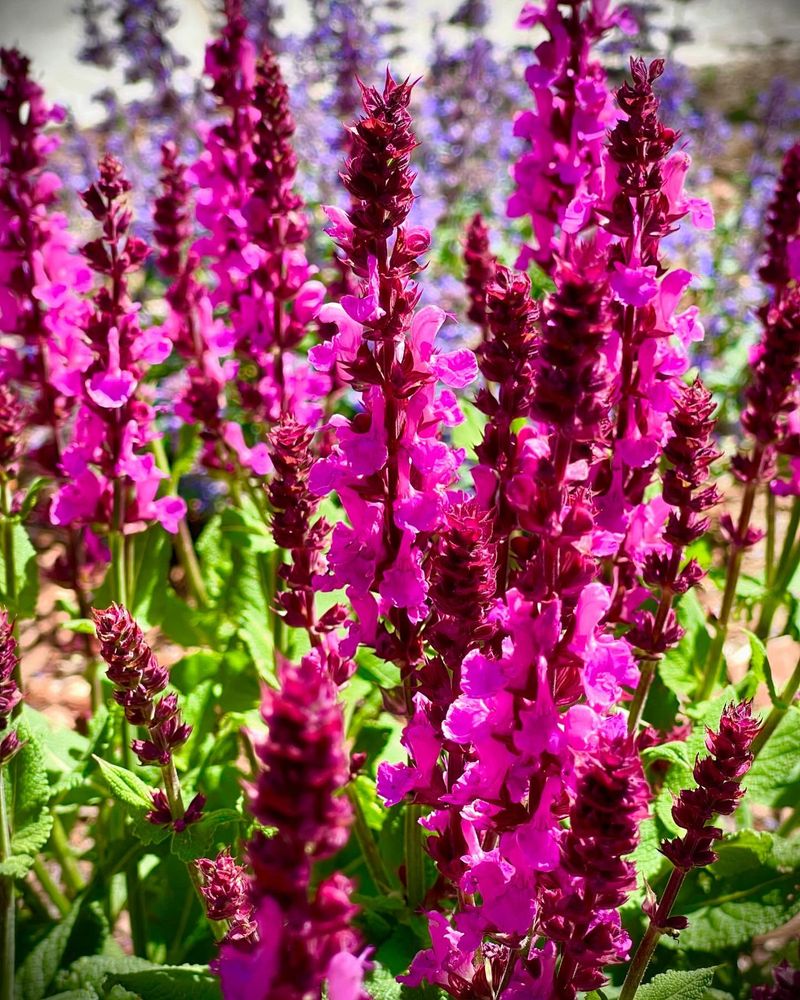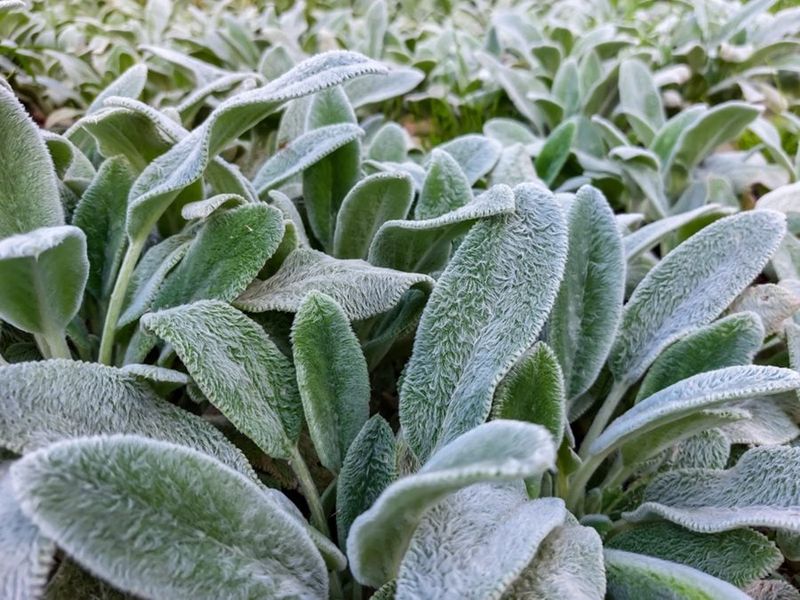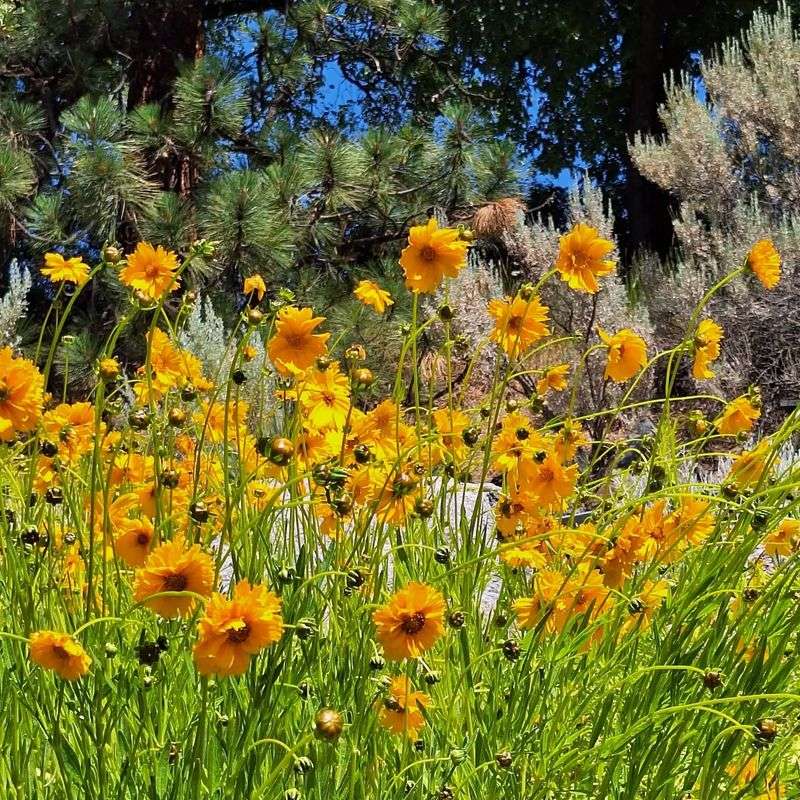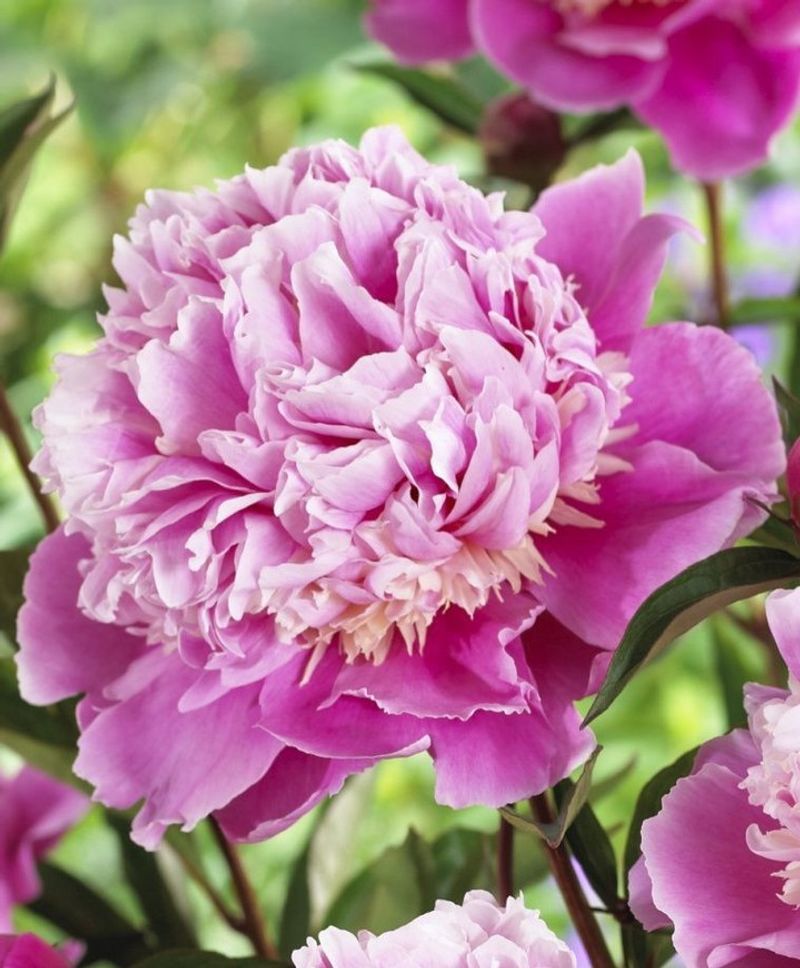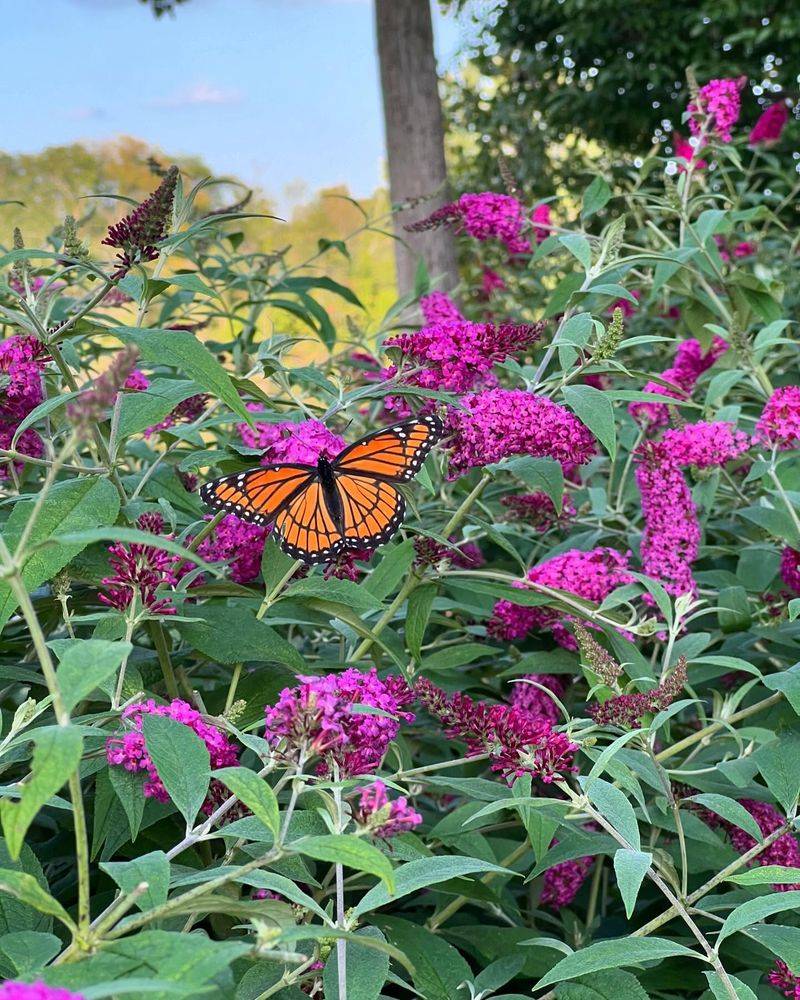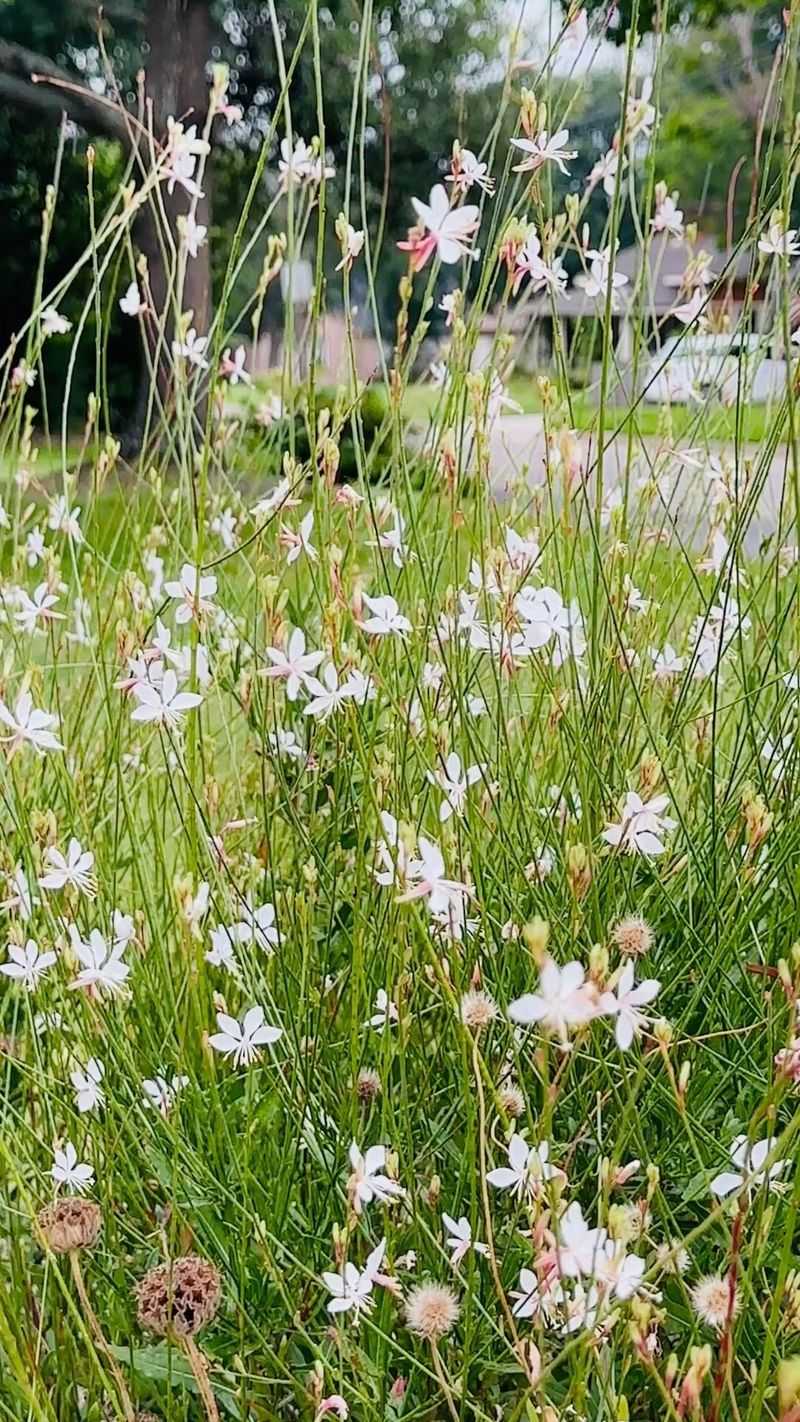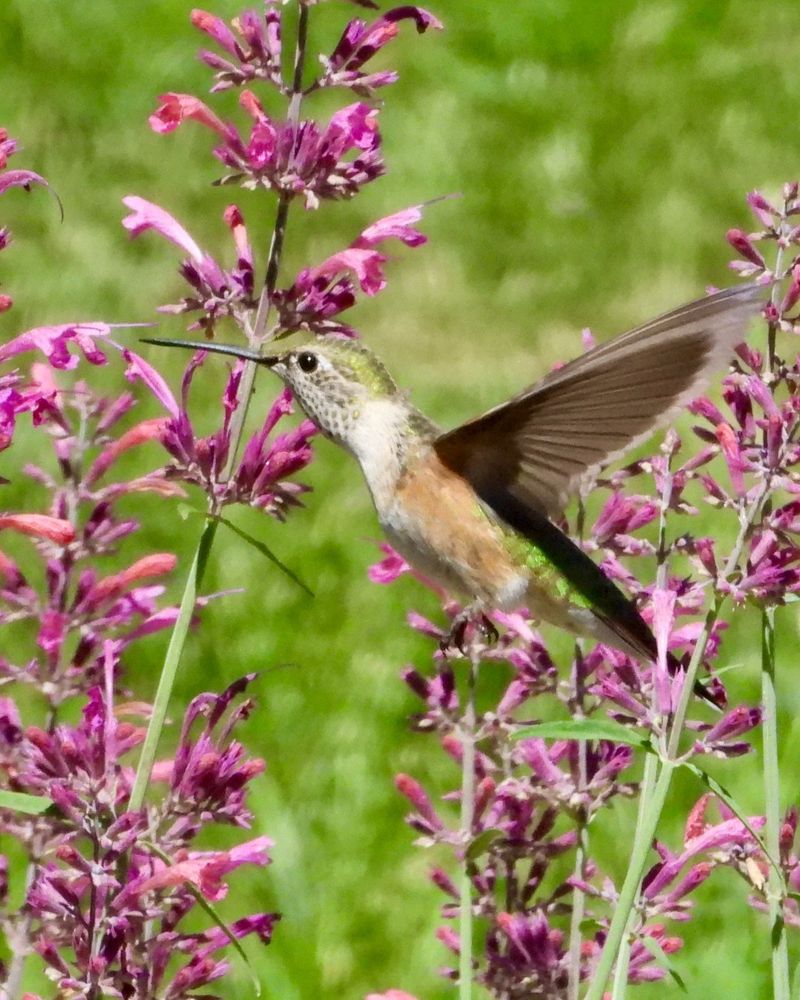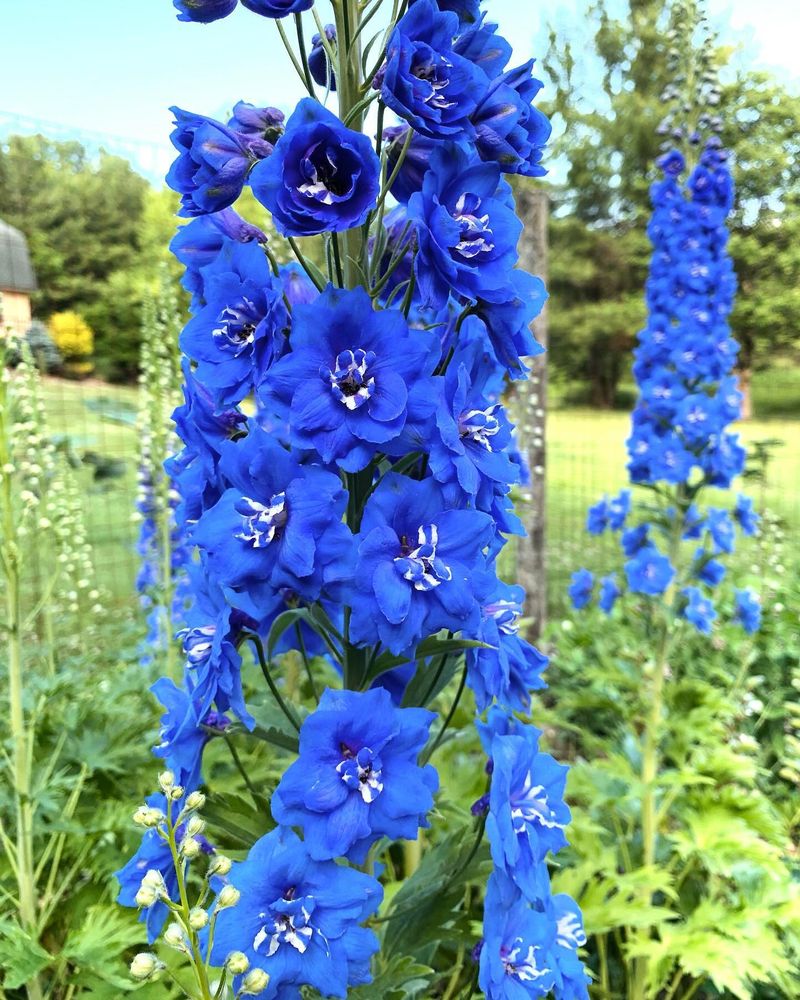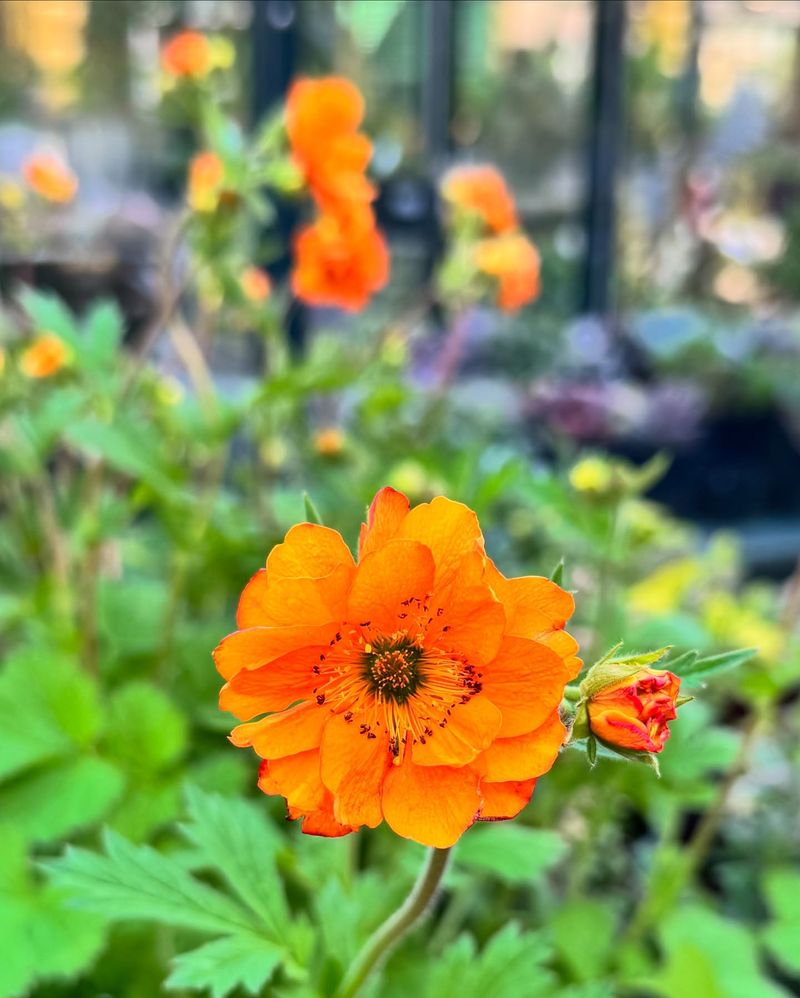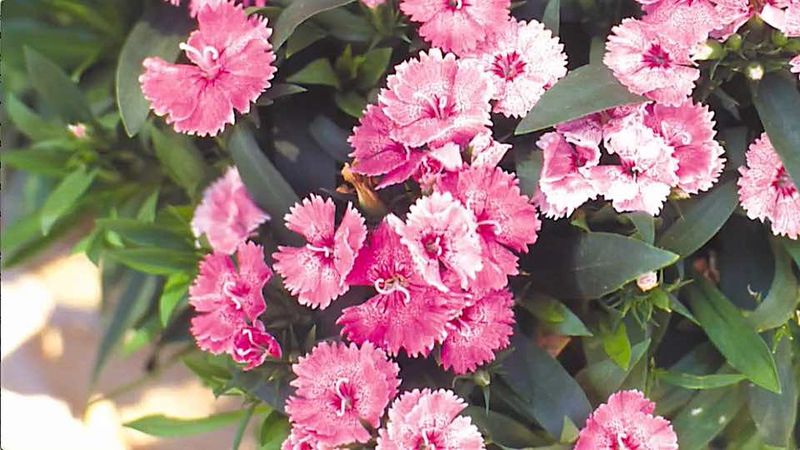Gardening can be tricky, especially when you’re trying to grow flowering plants in shady spots. While some perennials thrive in darkness, others simply refuse to show their beautiful blooms without adequate sunshine. If your garden has spots with limited light and you’re wondering why certain plants aren’t flowering, you might be growing sun-lovers in shade. Let’s explore twenty perennials that absolutely demand sunlight to reach their full, flowering potential.
1. Lavender’s Sunbathing Requirement
The aromatic purple spikes of lavender plants have soothed humans for centuries with their calming fragrance. Native to the sunny Mediterranean region, these lovely herbs have evolved to thrive in bright, open spaces with plenty of direct sunlight.
When planted in shade, lavender becomes leggy, produces fewer of its signature fragrant oils, and rarely flowers. The plant stretches awkwardly toward any available light, developing weak stems that often collapse.
For the quintessential lavender experience—compact growth, abundant blooms, and that heavenly scent—give these herbs at least 6-8 hours of full sun daily.
2. Coneflowers’ Solar Dependency
Striking and sturdy, coneflowers (Echinacea) naturally grow in open prairie environments where sunlight bathes them throughout the day. Their distinctive cone-shaped centers surrounded by colorful petals make them garden favorites and pollinator magnets.
Deprive these prairie natives of sufficient sunshine, and they’ll respond with disappointment. Shade-grown coneflowers develop thin, stretched stems as they desperately reach for light.
The few blooms they might produce will be smaller and less vibrant than their sun-soaked counterparts.
3. Black-Eyed Susan’s Light Addiction
Golden rays of petals surrounding a dark center make Black-Eyed Susans (Rudbeckia) instant garden cheerleaders. These North American natives evolved in open meadows where sunshine was abundant, and they’ve never lost their craving for bright light.
Place these sunshine-lovers in shade, and they’ll quickly show their displeasure. Growth becomes sparse and lanky as stems stretch toward any available light.
The normally abundant flowers become rare events, with smaller blooms that lack the vibrant golden-yellow color that makes them so beloved.
4. Shasta Daisies’ Sunshine Obsession
Classic white petals with sunny yellow centers make Shasta daisies quintessential cottage garden flowers. Their cheerful appearance belies a stubborn nature when it comes to growing conditions – these flowers simply demand a sunny spot to perform well.
Without adequate sunlight, Shasta daisies become shadow versions of themselves. Stems grow unnaturally tall and weak as they search for light, often flopping over from their own weight.
Flower production drastically decreases, and the few blooms that appear are smaller and less impressive.
5. Yarrow’s Bright Light Demands
Flat-topped clusters of tiny flowers in shades from white to yellow to deep red make yarrow (Achillea) a versatile garden performer. Despite its adaptability to poor soil, this perennial draws the line at shade, having evolved in open, sunny meadows across the Northern Hemisphere.
Shade-grown yarrow quickly becomes problematic. The normally sturdy stems weaken and flop, creating an untidy appearance that’s far from the upright, architectural plant gardeners desire.
Flowering significantly diminishes, and the plant becomes more susceptible to powdery mildew and other fungal issues in low-light, high-humidity environments.
6. Russian Sage’s Solar Power Needs
Clouds of lavender-blue flowers atop silvery stems create a dreamy, ethereal effect in gardens where Russian sage (Perovskia) grows. Native to sunny Central Asian steppes, this plant evolved to thrive in harsh, bright conditions that would wither many other perennials.
When denied its sunbathing rights, Russian sage becomes a garden disappointment. The normally upright habit turns floppy and sprawling as stems stretch for light. The signature silvery foliage loses its luster, appearing more green and ordinary.
Most noticeably, flowering becomes sparse or nonexistent, robbing gardens of the plant’s trademark lavender haze.
7. Sedum’s Sunshine Requirement
Succulent leaves and late-season flower clusters in shades of pink and burgundy make sedums (particularly Sedum ‘Autumn Joy’) garden standouts. Their drought-tolerant nature comes from adaptations to life in open, sunny environments with well-drained soil.
Shade-planted sedums transform from sturdy garden workhorses to lanky, unstable plants. Their normally compact growth becomes stretched and weak as they search for more light. The fleshy leaves grow farther apart, and the plant often topples under the weight of what few flower clusters manage to form.
Most critically, the stunning fall flower display—a magnet for butterflies and bees—becomes minimal or nonexistent.
8. Blanket Flower’s Sunshine Devotion
Fiery red and yellow blooms resembling Native American blanket patterns give Gaillardia (blanket flower) its common name. These prairie natives bring months of hot-colored flowers to gardens where they receive the abundant sunshine they evolved with in the wild.
Shade makes blanket flowers sulk noticeably. The normally floriferous plants produce few blooms, and those that appear lack the vibrant coloration that makes them so appealing. Plants become stretched and weak-stemmed, often requiring staking they wouldn’t need in proper sun.
The typically long bloom season from early summer through fall becomes abbreviated or sporadic.
9. Bearded Iris’s Light Fixation
Ruffled petals in every imaginable color, often with contrasting ‘beards,’ make bearded irises garden aristocrats. These spring-blooming perennials trace their ancestry to sun-baked Mediterranean regions, and they’ve never adapted to life in the shadows.
Shade-grown bearded irises exhibit several problems that disappoint gardeners. The rhizomes (thick root structures) often rot in shadier spots where soil stays damp longer. Foliage becomes sparse and weak, lacking the attractive fan shape that provides garden interest even when the plants aren’t blooming.
Most significantly, flower production drops dramatically or stops entirely.
10. Salvia’s Sunlight Craving
Spikes of tubular flowers in shades from deep blue to bright red make salvias (particularly Salvia nemorosa) hummingbird and butterfly magnets. These mint relatives evolved in open meadows and prairies where sunshine was plentiful throughout the growing season.
When planted in shade, salvias lose their garden-worthy qualities. The normally upright growth habit becomes floppy and requires staking. Plants produce fewer flowering spikes, and those that do appear are shorter and less impressive.
The vibrant flower colors appear washed out and less intense. Most perennial salvias need at least 6 hours of direct sun to develop their characteristic bushy form and abundant flower spikes that bring weeks of color to summer gardens.
11. Lamb’s Ear’s Brightness Needs
Velvety silver leaves that feel like the softest animal ear give Lamb’s Ear (Stachys byzantina) its charming name. This tactile perennial developed its fuzzy, reflective foliage as an adaptation to its native sunny, dry hillsides in the Middle East.
Shade causes multiple problems for this normally trouble-free plant. The signature silvery coating on the leaves diminishes, resulting in greener, less distinctive foliage. Plants become more susceptible to rot and fungal diseases as the fuzzy leaves trap moisture in shadier, less breezy locations.
Flowering stems, which rise above the foliage in summer, become weak and floppy.
12. Coreopsis’s Solar Dependence
Masses of daisy-like flowers in sunny yellows and warm oranges make Coreopsis (tickseed) a summer garden standout. Native to open North American prairies and meadows, these cheerful perennials evolved to thrive in locations with abundant direct sunlight.
When forced to grow in shade, Coreopsis plants become sad shadows of their sunny-spot counterparts. Stems stretch awkwardly toward any available light, creating a leggy, unstable plant that often requires staking.
The normally abundant flowers become rare events, with fewer, smaller blooms that lack the vibrant color that makes them so appealing.
13. Penstemon’s Light Requirement
Tubular flowers in jewel tones that attract hummingbirds and beneficial insects make Penstemon (beardtongue) a wildlife-friendly garden choice. These North American natives naturally grow in open prairies, meadows, and mountainsides where sunshine is abundant.
Shade-grown Penstemons struggle in multiple ways. The normally upright stems become weak and floppy as they stretch toward available light. Disease problems increase as air circulation decreases in shadier spots.
Most noticeably, the flowering display becomes minimal, with fewer flower spikes and less vibrant colors on those that do appear.
14. Peony’s Sunshine Obsession
Massive, fragrant blooms in shades from pure white to deepest red make peonies garden royalty. These long-lived perennials have been cultivated for centuries in open garden settings where they receive the generous sunlight they require to produce their spectacular flowers.
Shade-planted peonies disappoint gardeners who dream of those dinner-plate sized blooms. Plants grow with thinner stems and smaller leaves, indicating their struggle for energy. Flower buds may form but often fail to open properly, remaining as tight balls that never reveal their potential.
Those that do open produce smaller, less impressive blooms with weaker stems that can’t support the flowers’ weight.
15. Butterfly Bush’s Light Addiction
Long, arching flower spikes covered in tiny blooms that attract countless butterflies give Butterfly Bush (Buddleja) its well-deserved name. Native to open, sunny habitats in Asia and the Americas, these shrubby perennials evolved to bask in bright sunshine.
When planted in shade, Butterfly Bushes fail to live up to their potential. Growth becomes sparse and leggy as branches stretch toward any available light. The signature long flower panicles become shorter and fewer, with less intense color.
Most disappointingly, the plants attract far fewer butterflies and pollinators, as the nectar production decreases significantly in shadier conditions.
16. Gaura’s Sunshine Requirement
Dancing white and pink flowers on wiry stems that move with the slightest breeze give Gaura its common name of ‘Whirling Butterflies.’ Native to the sun-drenched prairies of southern North America, these perennials evolved to thrive in hot, bright conditions.
Shade causes Gaura to lose its garden-worthy qualities. The normally airy, see-through quality of the plant becomes a mess of stretched, flopping stems that require staking.
The trademark dancing flowers appear in drastically reduced numbers, and the plants’ naturally long bloom time from early summer through fall becomes abbreviated.
17. Agastache’s Light Fixation
Spikes of tubular flowers in shades from blue to orange make Agastache (hyssop) irresistible to hummingbirds and butterflies. These aromatic perennials evolved in open, sunny regions of North America where their minty fragrance wafts through the air on warm summer days.
When denied adequate sunshine, Agastache plants become garden disappointments. The normally upright growth becomes weak and splayed, requiring unsightly staking. The signature fragrance that gives them common names like ‘anise hyssop’ diminishes significantly. Most noticeably, flowering becomes sparse or nonexistent, eliminating the weeks of colorful blooms and pollinator activity these plants typically provide.
18. Delphinium’s Bright Needs
Tall spires of blue, purple, pink, or white flowers make Delphiniums vertical garden standouts. These cottage garden classics originated in mountain meadows where cool temperatures combined with bright, direct sunlight to create their ideal growing conditions.
Shade-grown Delphiniums struggle in ways that frustrate gardeners. The towering flower spikes that can reach 6 feet in ideal conditions remain short and unimpressive. Plants become more susceptible to powdery mildew and other fungal issues in shadier spots with reduced air circulation.
Most disappointingly, the vibrant flower colors that make these plants so desirable appear washed out and less intense.
19. Geum’s Sunlight Passion
Semi-double flowers in bright oranges, yellows, and reds bobbing on wiry stems above neat rosettes of foliage make Geum a charming garden addition. These spring and early summer bloomers evolved in open meadows where sunshine was plentiful during their growing and flowering period.
When planted in shade, Geums lose their garden-worthy qualities. The normally abundant flowers become rare occurrences, and those that do appear have weaker stems that often flop rather than standing proudly above the foliage.
The vibrant flower colors that make these plants so appealing appear duller and less intense. The compact foliage rosettes become loose and stretched as the plant searches for more light.
20. Dianthus’s Solar Devotion
Spicy-scented flowers with distinctive fringed petals in shades from white to deepest red make Dianthus (pinks) cottage garden essentials. These perennials trace their ancestry to the Mediterranean region, where they evolved growing on sunny, rocky slopes.
Shade causes multiple problems for these normally resilient plants. The compact, mounding growth habit becomes loose and stretched as plants reach for more light. The signature spicy fragrance that gives carnations and pinks their appeal diminishes significantly.
Flowering decreases dramatically, with fewer blooms that lack the vibrant colors and distinct patterns that make these plants so beloved.

